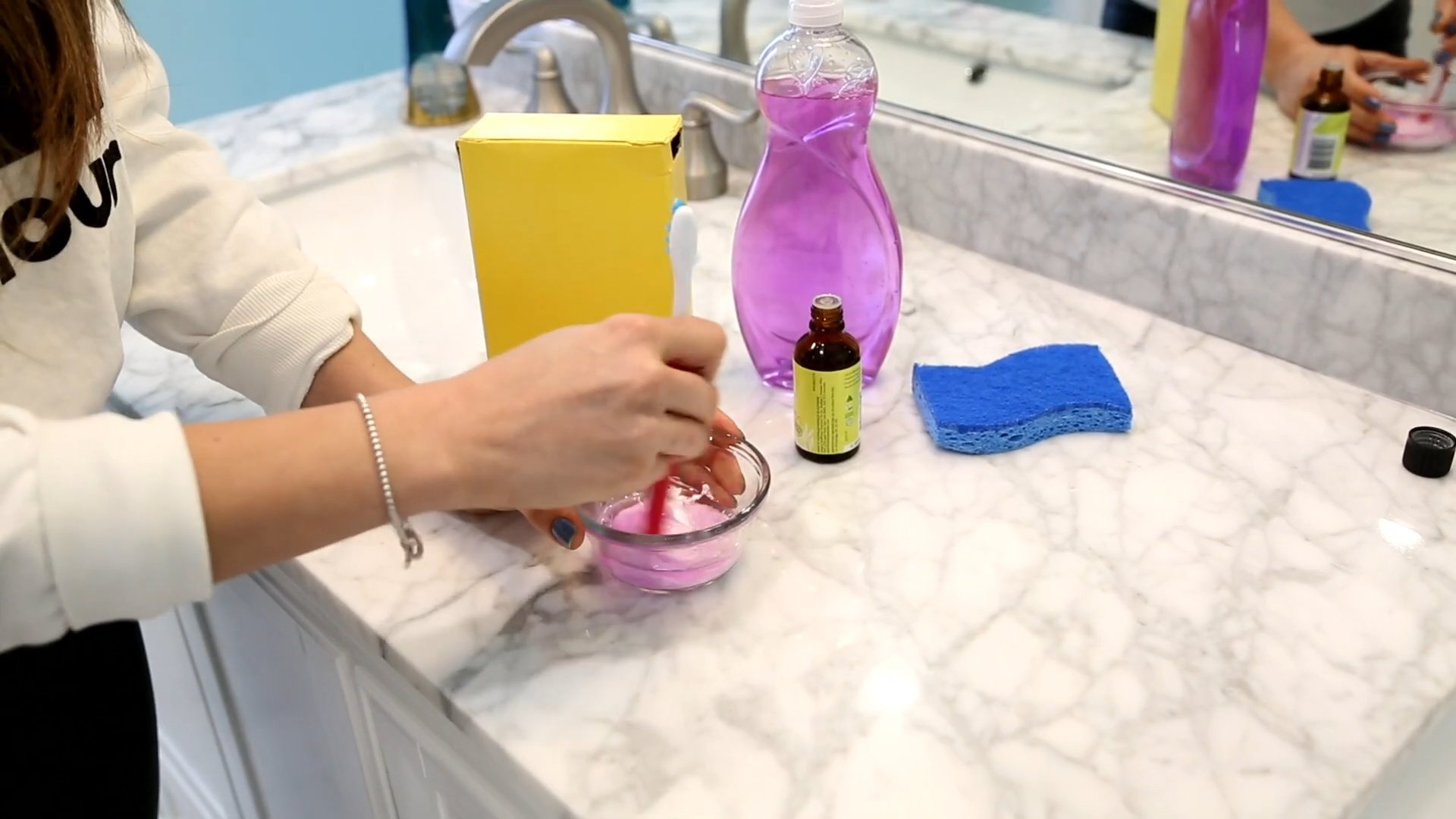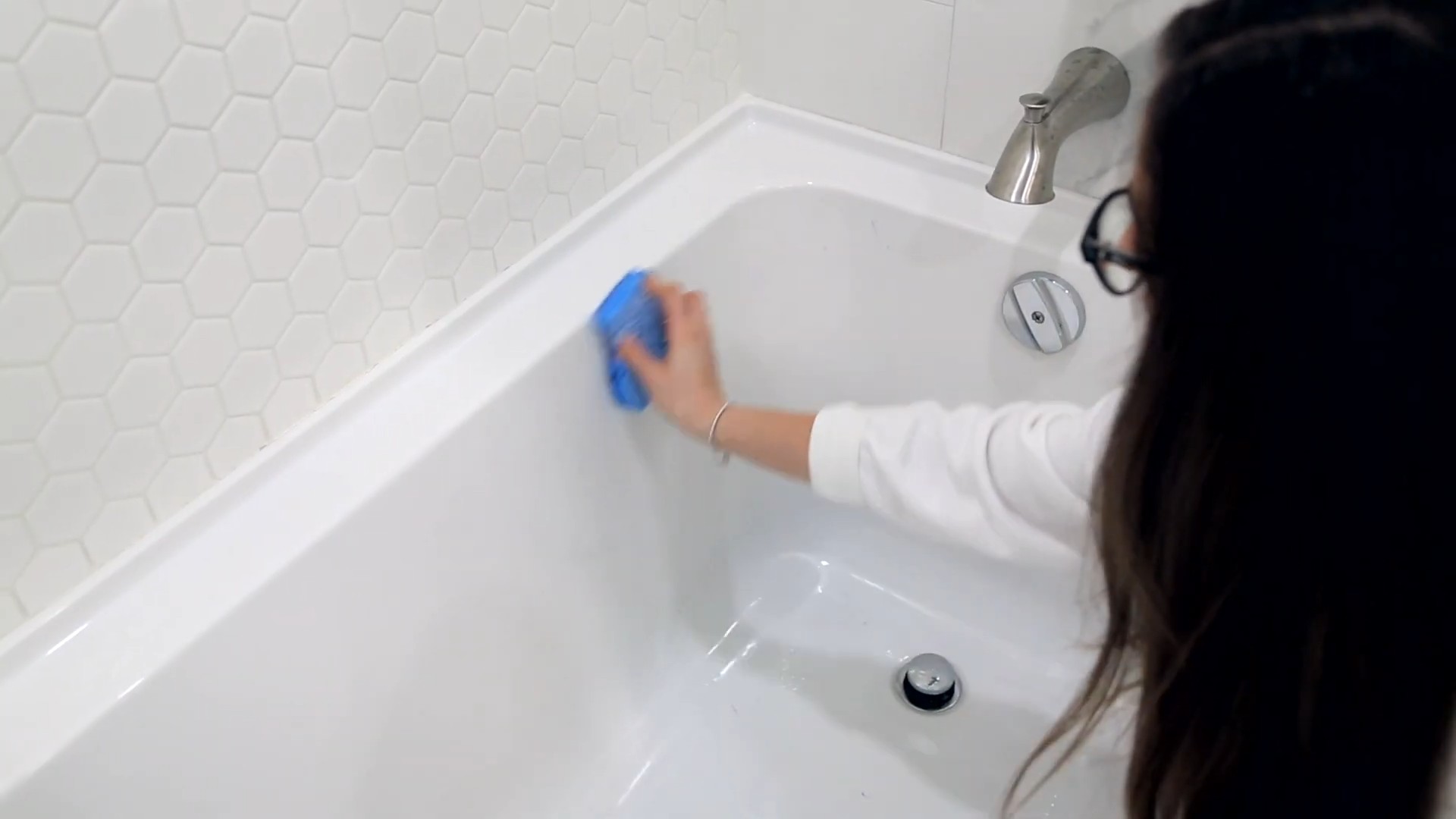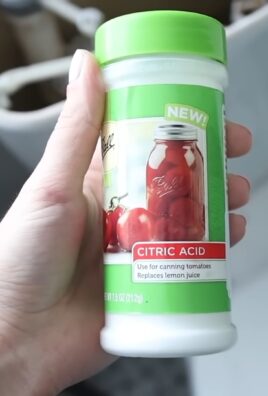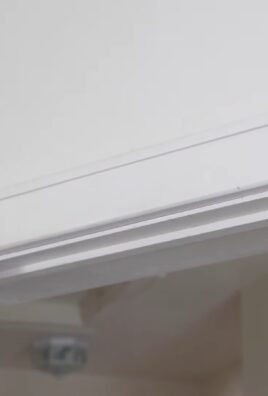Baking Soda Cleaning Tricks: Who knew that humble box sitting in your pantry could be a secret weapon against grime and dirt? I’m always amazed at the versatility of baking soda! For generations, this simple compound has been a staple in homes, not just for baking delicious treats, but also for its incredible cleaning power. Think about it – our grandmothers probably relied on baking soda for everything from scrubbing sinks to freshening carpets, long before fancy, expensive cleaning products lined store shelves.
But in today’s world, we’re bombarded with so many specialized cleaners that we often forget about the simple, effective solutions right under our noses. That’s why I’m so excited to share these amazing DIY baking soda cleaning tricks with you! From tackling stubborn stains to deodorizing your entire home, baking soda offers a safe, affordable, and eco-friendly alternative to harsh chemicals.
Let’s face it, nobody enjoys spending hours scrubbing and cleaning. These baking soda cleaning tricks are designed to save you time, money, and effort, while leaving your home sparkling clean and smelling fresh. So, ditch the expensive cleaners and get ready to unlock the cleaning potential of this everyday essential! I promise, you’ll be amazed at the results.

Unlocking the Cleaning Powerhouse: Baking Soda DIY Hacks
Hey there, fellow DIY enthusiasts! I’m so excited to share some of my favorite cleaning hacks using the humble, yet incredibly powerful, baking soda. Forget those expensive, chemical-laden cleaners – baking soda is your new best friend for a sparkling clean home. Let’s dive in!
Baking Soda Basics: Why It Works
Before we get started, let’s quickly understand why baking soda is such a cleaning superstar. It’s a mild alkali, which means it can dissolve dirt, grease, and grime. It’s also a natural deodorizer, absorbing odors instead of just masking them. Plus, it’s non-toxic and gentle, making it safe for your family and the environment.
Cleaning Your Kitchen with Baking Soda
The kitchen is often the dirtiest room in the house, but baking soda can tackle even the toughest messes.
Cleaning the Oven
A dirty oven is a common problem, but harsh oven cleaners can be a pain to use. Here’s how to clean your oven with baking soda:
1. Prepare the Paste: In a bowl, mix 1/2 cup of baking soda with enough water to form a spreadable paste. I usually start with a few tablespoons of water and add more until I get the right consistency.
2. Coat the Oven: Spread the paste all over the inside of your oven, avoiding the heating elements. I like to wear gloves for this step, but it’s not essential. Make sure to get into all the corners and crevices.
3. Let It Sit: This is the key! Let the baking soda paste sit in your oven for at least 12 hours, or even overnight. The longer it sits, the easier it will be to remove the grime.
4. Wipe It Clean: After the waiting period, use a damp cloth or sponge to wipe away the baking soda paste. You might need to scrub a bit in some areas, especially if your oven was really dirty.
5. Rinse and Repeat: Rinse your cloth or sponge frequently with clean water. You might need to repeat the wiping process a few times to remove all the baking soda residue.
6. Vinegar Spray (Optional): For any stubborn spots, spray a little white vinegar onto the remaining baking soda residue. The vinegar will react with the baking soda, creating a fizzing action that helps to loosen the grime. Wipe away the vinegar and baking soda mixture with a clean cloth.
7. Final Wipe Down: Give your oven a final wipe down with a clean, damp cloth to ensure all the baking soda and vinegar are removed.
Cleaning the Microwave
Microwaves can get splattered and messy quickly. Here’s a simple baking soda solution:
1. Baking Soda Solution: Mix 2 tablespoons of baking soda with 1 cup of water in a microwave-safe bowl.
2. Microwave It: Place the bowl in the microwave and heat it on high for 2-3 minutes. The steam from the baking soda solution will help to loosen the food particles stuck to the inside of the microwave.
3. Let It Sit: Leave the bowl in the microwave for another 5-10 minutes to allow the steam to work its magic.
4. Wipe It Clean: Carefully remove the bowl (it will be hot!) and use a damp cloth or sponge to wipe away the loosened food particles. The microwave should be much easier to clean now.
Cleaning the Sink
Baking soda is great for cleaning and deodorizing your kitchen sink.
1. Sprinkle Baking Soda: Sprinkle baking soda all over the bottom of your sink.
2. Scrub: Use a damp sponge or cloth to scrub the sink. The baking soda will act as a mild abrasive, helping to remove stains and grime.
3. Rinse: Rinse the sink thoroughly with water.
4. Vinegar Rinse (Optional): For extra shine and deodorizing power, pour a cup of white vinegar down the drain after rinsing. Let it sit for a few minutes, then flush with hot water.
Cleaning Cutting Boards
Cutting boards, especially wooden ones, can harbor bacteria and odors. Baking soda to the rescue!
1. Sprinkle and Scrub: Sprinkle baking soda on the cutting board and scrub with a damp sponge or cloth.
2. Lemon Juice Boost (Optional): For extra cleaning power and a fresh scent, squeeze some lemon juice onto the baking soda before scrubbing.
3. Rinse Thoroughly: Rinse the cutting board thoroughly with hot water.
Bathroom Brilliance with Baking Soda
The bathroom is another area where baking soda can really shine.
Cleaning the Toilet
Cleaning the toilet is never
Hey there, fellow DIY enthusiasts! I’m so excited to share some of my favorite cleaning hacks using the humble, yet incredibly powerful, baking soda. Forget those expensive, chemical-laden cleaners – baking soda is your new best friend for a sparkling clean home. Let’s dive in!
Baking Soda Basics: Why It Works
Before we get started, let’s quickly understand why baking soda is such a cleaning superstar. It’s a mild alkali, which means it can dissolve dirt, grease, and grime. It’s also a natural deodorizer, absorbing odors instead of just masking them. Plus, it’s non-toxic and gentle, making it safe for your family and the environment.
Cleaning Your Kitchen with Baking Soda
The kitchen is often the dirtiest room in the house, but baking soda can tackle even the toughest messes.
Cleaning the Oven
A dirty oven is a common problem, but harsh oven cleaners can be a pain to use. Here’s how to clean your oven with baking soda:
1. Prepare the Paste: In a bowl, mix 1/2 cup of baking soda with enough water to form a spreadable paste. I usually start with a few tablespoons of water and add more until I get the right consistency.
2. Coat the Oven: Spread the paste all over the inside of your oven, avoiding the heating elements. I like to wear gloves for this step, but it’s not essential. Make sure to get into all the corners and crevices.
3. Let It Sit: This is the key! Let the baking soda paste sit in your oven for at least 12 hours, or even overnight. The longer it sits, the easier it will be to remove the grime.
4. Wipe It Clean: After the waiting period, use a damp cloth or sponge to wipe away the baking soda paste. You might need to scrub a bit in some areas, especially if your oven was really dirty.
5. Rinse and Repeat: Rinse your cloth or sponge frequently with clean water. You might need to repeat the wiping process a few times to remove all the baking soda residue.
6. Vinegar Spray (Optional): For any stubborn spots, spray a little white vinegar onto the remaining baking soda residue. The vinegar will react with the baking soda, creating a fizzing action that helps to loosen the grime. Wipe away the vinegar and baking soda mixture with a clean cloth.
7. Final Wipe Down: Give your oven a final wipe down with a clean, damp cloth to ensure all the baking soda and vinegar are removed.
Cleaning the Microwave
Microwaves can get splattered and messy quickly. Here’s a simple baking soda solution:
1. Baking Soda Solution: Mix 2 tablespoons of baking soda with 1 cup of water in a microwave-safe bowl.
2. Microwave It: Place the bowl in the microwave and heat it on high for 2-3 minutes. The steam from the baking soda solution will help to loosen the food particles stuck to the inside of the microwave.
3. Let It Sit: Leave the bowl in the microwave for another 5-10 minutes to allow the steam to work its magic.
4. Wipe It Clean: Carefully remove the bowl (it will be hot!) and use a damp cloth or sponge to wipe away the loosened food particles. The microwave should be much easier to clean now.
Cleaning the Sink
Baking soda is great for cleaning and deodorizing your kitchen sink.
1. Sprinkle Baking Soda: Sprinkle baking soda all over the bottom of your sink.
2. Scrub: Use a damp sponge or cloth to scrub the sink. The baking soda will act as a mild abrasive, helping to remove stains and grime.
3. Rinse: Rinse the sink thoroughly with water.
4. Vinegar Rinse (Optional): For extra shine and deodorizing power, pour a cup of white vinegar down the drain after rinsing. Let it sit for a few minutes, then flush with hot water.
Cleaning Cutting Boards
Cutting boards, especially wooden ones, can harbor bacteria and odors. Baking soda to the rescue!
1. Sprinkle and Scrub: Sprinkle baking soda on the cutting board and scrub with a damp sponge or cloth.
2. Lemon Juice Boost (Optional): For extra cleaning power and a fresh scent, squeeze some lemon juice onto the baking soda before scrubbing.
3. Rinse Thoroughly: Rinse the cutting board thoroughly with hot water.
Bathroom Brilliance with Baking Soda
The bathroom is another area where baking soda can really shine.
Cleaning the Toilet
Cleaning the toilet is never fun, but baking soda makes it a little easier.
1. Pour in Baking Soda: Pour 1 cup of baking soda into the toilet bowl.
2. Let It Sit: Let the baking soda sit for at least 30 minutes, or even overnight for a deeper clean.
3. Add Vinegar (Optional): For extra cleaning power, pour 1 cup of white vinegar into the toilet bowl after the baking soda has sat for a while. The vinegar will react with the baking soda, creating a fizzing action that helps to loosen stains and grime.
4. Scrub: Use a toilet brush to scrub the bowl thoroughly.
5. Flush: Flush the toilet to rinse away the baking soda and vinegar.
Cleaning the Shower and Tub
Soap scum and mildew can be tough to remove from showers and tubs, but baking soda can help.
1. Make a Paste: Mix baking soda with water to form a paste.
2. Apply the Paste: Apply the paste to the shower and tub surfaces, focusing on areas with soap scum and mildew.
3. Let It Sit: Let the paste sit for 15-20 minutes.
4. Scrub: Scrub the surfaces with a sponge or brush.
5. Rinse: Rinse thoroughly with water.
Cleaning Grout
Dirty grout can make your bathroom look dingy. Here’s how to clean grout with baking soda:
1. Make a Paste: Mix baking soda with water to form a thick paste.
2. Apply to Grout: Apply the paste to the grout lines.
3. Let It Sit: Let the paste sit for 10-15 minutes.
4. Scrub: Scrub the grout lines with an old toothbrush or grout brush.
5. Rinse: Rinse thoroughly with water.
Deodorizing with Baking Soda
Baking soda is a fantastic natural deodorizer.
Deodorizing Carpets and Rugs
1. Sprinkle Baking Soda: Generously sprinkle baking soda over the carpet or rug.
2. Let It Sit: Let the baking soda sit for at least 30 minutes, or even overnight for a deeper deodorizing effect.
3. Vacuum: Vacuum up the baking soda thoroughly.
Deodorizing the Refrigerator
1. Open Box: Place an open box of baking soda in the refrigerator.
2. Replace Regularly: Replace the box every month or two to keep your refrigerator smelling fresh.
Deodorizing Trash Cans
1. Sprinkle in Bottom: Sprinkle baking soda in the bottom of the trash can before putting in a new bag.
2. Clean Regularly: Regularly clean the trash can with a baking soda and water solution to prevent odors from building up.
Laundry Boost with Baking Soda
Baking soda can also be used in the laundry room to boost your detergent’s cleaning power and freshen your clothes.
1. Add to Wash: Add 1/2 cup of baking soda to your washing machine along with your regular detergent.
2. Whiten Whites: Baking soda can help to whiten whites and brighten colors.
3. Deodorize Clothes: Baking soda can also help to deodorize clothes, especially those with strong odors like sweat or smoke.
Other Clever Baking Soda Hacks
Here are a few more of my favorite baking soda hacks:
* Polishing Silver: Make a paste of baking soda and water and use it to polish silver. Rinse thoroughly and dry with a soft cloth.
* Removing Stickers: Make a paste of baking soda and water and apply it to the sticker residue. Let it sit for a few minutes, then scrub gently.
* Cleaning Car Headlights: Make a paste of baking soda and water and apply it to the headlights. Scrub with a sponge or cloth, then rinse thoroughly.
Important Considerations
While baking soda is generally safe, there are a few things to keep in mind:
* Avoid Mixing with Acidic Cleaners: Do not mix baking soda with acidic cleaners like vinegar or lemon juice in a closed container, as this can create pressure and cause the container to explode.
* Test on a Small Area: Before

Conclusion
So, there you have it! These baking soda cleaning tricks are not just simple hacks; they’re a game-changer for anyone looking to maintain a sparkling clean home without relying on harsh chemicals. From deodorizing your refrigerator to scrubbing away stubborn grime in your oven, the versatility of baking soda is truly remarkable. It’s a cost-effective, eco-friendly, and readily available solution that tackles a wide range of cleaning challenges.
Why is this a must-try? Because it simplifies your cleaning routine, saves you money, and contributes to a healthier living environment. Imagine replacing a cabinet full of specialized cleaning products with a single, powerful ingredient. Think of the peace of mind knowing that you’re not exposing your family to potentially harmful chemicals. And consider the satisfaction of achieving a spotless home using a natural and sustainable method.
But don’t stop there! The beauty of baking soda lies in its adaptability. Feel free to experiment with different variations to suit your specific needs. For instance, add a few drops of your favorite essential oil to your baking soda paste for a pleasant scent. Combine baking soda with vinegar for a powerful fizzing action that loosens tough stains. Or, create a baking soda and water solution to gently clean delicate surfaces like marble or granite.
Remember, the key to success with these baking soda cleaning tricks is to be patient and persistent. Some stains may require multiple applications or longer soaking times. But with a little elbow grease and the power of baking soda, you’ll be amazed at the results you can achieve.
We wholeheartedly encourage you to try these DIY cleaning methods and discover the magic of baking soda for yourself. Once you experience the effectiveness and simplicity of these tricks, you’ll wonder how you ever lived without them.
Don’t just take our word for it. Give these baking soda cleaning tricks a try and share your experiences with us! We’d love to hear about your successes, your challenges, and any creative variations you’ve discovered. Let’s build a community of eco-conscious cleaners who are passionate about creating a healthy and sparkling home. Share your tips and tricks in the comments below, and let’s inspire each other to embrace the power of natural cleaning!
Frequently Asked Questions (FAQs)
What exactly *is* baking soda, and why is it such a good cleaner?
Baking soda, also known as sodium bicarbonate, is a naturally occurring alkaline compound. Its mild abrasiveness helps to scrub away dirt and grime without scratching surfaces. Its alkaline nature neutralizes acids, making it effective at removing odors and dissolving grease. It’s also a natural deodorizer, absorbing and neutralizing smells rather than just masking them. This combination of properties makes it a versatile and effective cleaning agent.
Is baking soda safe to use on all surfaces?
While baking soda is generally safe, it’s always a good idea to test it on an inconspicuous area first, especially on delicate surfaces like polished wood or certain types of fabric. Avoid using baking soda on aluminum, as it can cause discoloration. For marble and granite, use a very diluted solution and rinse thoroughly. When in doubt, consult the manufacturer’s instructions for your specific surface.
Can I mix baking soda with other cleaning products?
While baking soda is a powerful cleaner on its own, it can be safely mixed with a few other ingredients to boost its effectiveness. Vinegar is a popular choice, creating a fizzing action that helps to loosen stubborn stains. However, *never* mix baking soda with bleach, as this can create harmful and potentially deadly chlorine gas. Essential oils can be added for fragrance and added cleaning power. Always research the safety of mixing different cleaning agents before combining them.
How do I store baking soda properly?
Baking soda should be stored in an airtight container in a cool, dry place. This will prevent it from absorbing moisture and odors from the surrounding environment. Properly stored baking soda can last for several years. If you notice that your baking soda has become clumpy or has absorbed odors, it’s time to replace it.
What are some other uses for baking soda besides cleaning?
Baking soda has a wide range of uses beyond cleaning. It can be used as a leavening agent in baking, as a natural antacid to relieve heartburn, as a toothpaste to whiten teeth, and as a deodorant to absorb body odor. It can also be used to soothe insect bites and sunburns. Its versatility makes it a valuable addition to any household.
How often should I use baking soda for cleaning?
The frequency of using baking soda for cleaning depends on your individual needs and the specific area you’re cleaning. For general cleaning, you can use baking soda as needed to remove dirt, grime, and odors. For more stubborn stains or heavily soiled areas, you may need to use it more frequently. Regular use of baking soda can help to prevent buildup and keep your home sparkling clean.
What if I don’t see results immediately?
Some stains and odors may require multiple applications of baking soda or longer soaking times. Don’t be discouraged if you don’t see results immediately. Be patient and persistent, and you’ll eventually achieve the desired outcome. You can also try combining baking soda with other cleaning agents, such as vinegar or lemon juice, to boost its effectiveness.
Is baking soda environmentally friendly?
Yes, baking soda is considered an environmentally friendly cleaning agent. It’s a natural substance that is non-toxic and biodegradable. It doesn’t contain any harsh chemicals or pollutants that can harm the environment. Using baking soda for cleaning can help to reduce your reliance on synthetic cleaning products and contribute to a more sustainable lifestyle.
Can baking soda help with pet odors?
Absolutely! Baking soda is excellent at absorbing and neutralizing pet odors. Sprinkle baking soda on carpets, upholstery, and pet bedding, let it sit for at least 30 minutes (or even overnight), and then vacuum it up. You can also place open boxes of baking soda in areas where pet odors are prevalent.
What’s the best way to clean a burnt pot with baking soda?
For a burnt pot, cover the burnt area with a layer of baking soda. Add enough water to cover the baking soda and the burnt food. Bring the mixture to a boil and then simmer for 15-20 minutes. Let the pot cool, and then scrub away the burnt food with a sponge or scrub brush. For particularly stubborn burns, you may need to repeat the process or let the pot soak overnight.




Leave a Comment